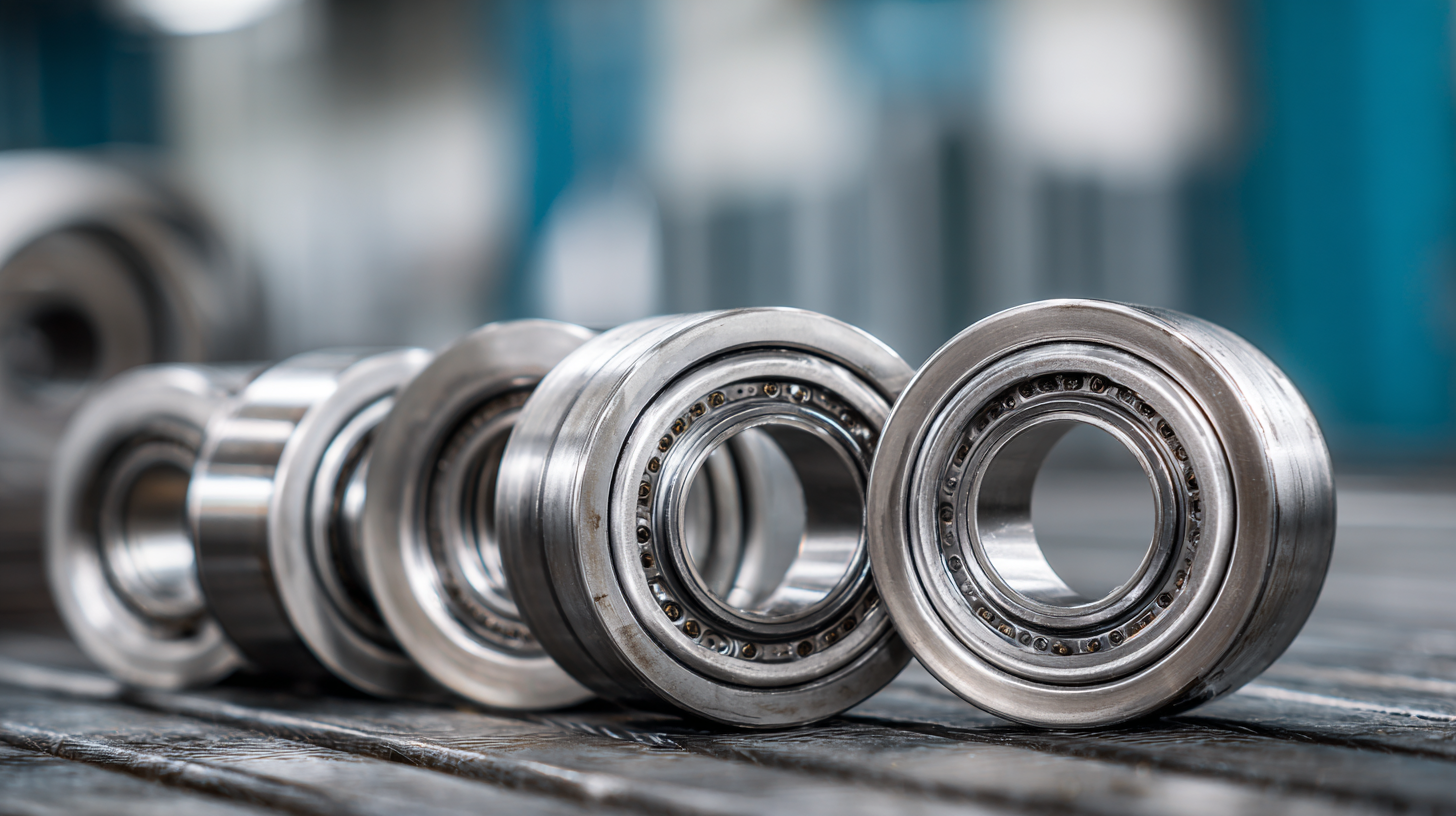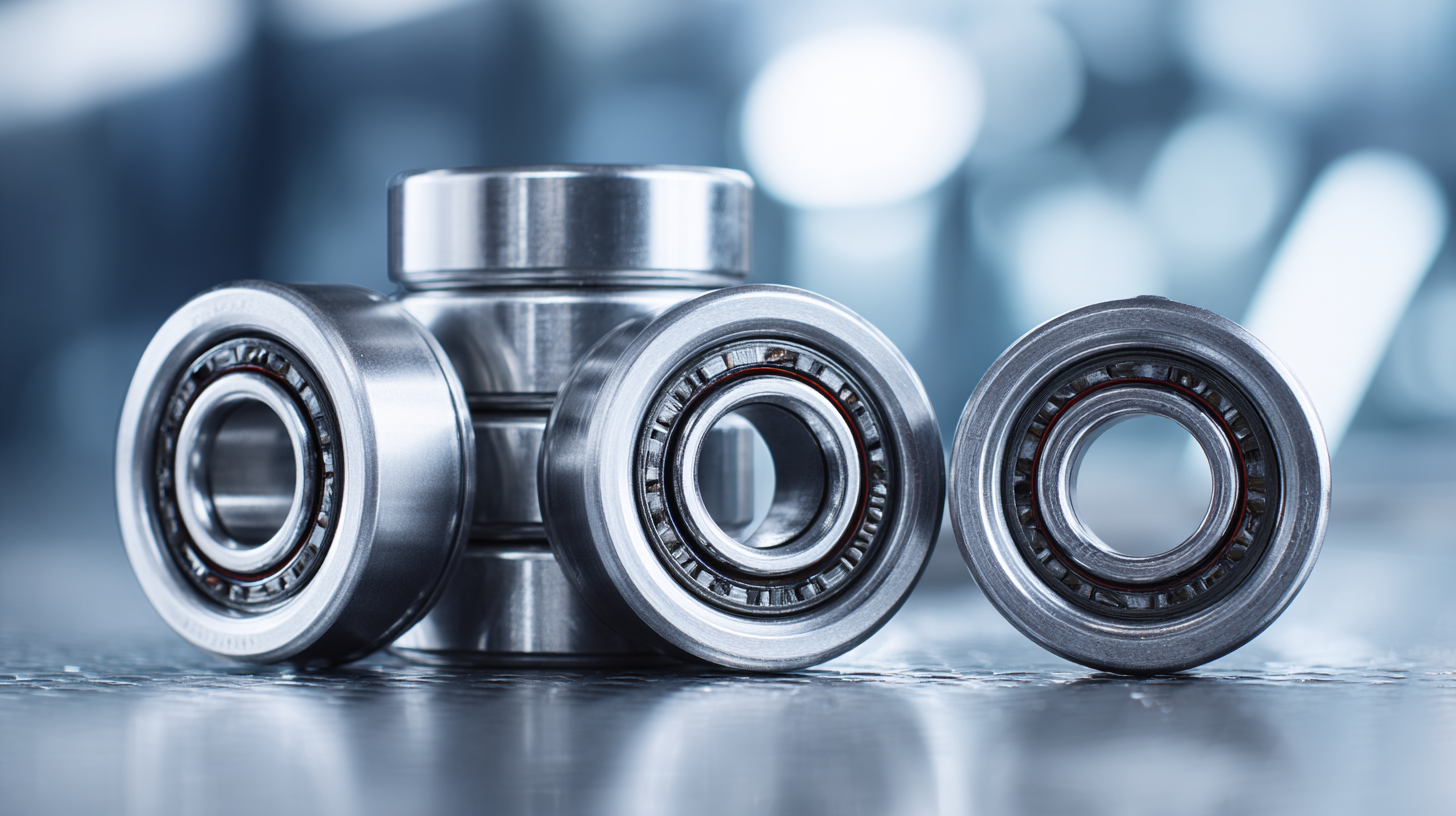5 Key Factors to Choose the Best Stainless Steel Bearings for Global Procurement
In the rapidly evolving landscape of global procurement, selecting the right components is crucial for operational efficiency and longevity. Stainless steel bearings, known for their corrosion resistance and durability, play a fundamental role in various industrial applications. According to a market research report by Grand View Research, the global market for bearings is expected to reach USD 103.55 billion by 2025, growing at a CAGR of 7.5%. As industries increasingly prioritize reliability and performance, the demand for high-quality stainless steel bearings continues to rise. This makes it imperative for procurement professionals to meticulously evaluate their options based on key factors that influence overall performance and value. In this blog, we will explore five essential criteria to consider when selecting the best stainless steel bearings, ensuring informed decisions that enhance operational excellence.

Understanding the Different Types of Stainless Steel Bearings Available in the Market
When selecting stainless steel bearings for global procurement, understanding the different types available in the market is essential. Generally, stainless steel bearings fall into several categories, including ball bearings, roller bearings, and specialty bearings tailored for specific applications. Each type has unique characteristics that make it suitable for particular environments, which is crucial when considering factors like corrosion resistance and load-bearing capacity.
Tip 1: Consider the application when choosing the type of stainless steel bearing. For high-load applications, roller bearings may provide better support, while ball bearings are often preferred for their smooth operation in lighter loads.
The materials used in manufacturing stainless steel bearings also vary, impacting performance and longevity. 440C stainless steel, for example, offers excellent hardness and corrosion resistance, making it a popular choice for demanding industrial applications. Meanwhile, 316 stainless steel is favored for marine environments due to its superior resistance to saltwater corrosion.
Tip 2: Check for certifications and quality standards relevant to your industry when procuring stainless steel bearings. This can help ensure that the bearings meet safety and performance expectations, ultimately reducing maintenance costs and downtime.
Evaluating Corrosion Resistance to Enhance Bearing Longevity
When choosing stainless steel bearings for global procurement, assessing corrosion resistance is crucial for enhancing the longevity of the products. Stainless steel is favored for its durability and resistance to wear, but various grades offer different levels of protection against corrosive elements. Factors such as environmental conditions, exposure to chemicals, and moisture levels are essential considerations that can influence the performance and lifespan of bearings in diverse applications.

To evaluate corrosion resistance effectively, it's essential to understand the material composition and the specific grade of stainless steel used. For instance, 316 stainless steel contains molybdenum, which significantly improves resistance to pitting in chloride environments. Testing methodologies, such as salt spray tests and electrochemical techniques, can provide insights into how bearings will perform under corrosive conditions. By selecting bearings that exhibit optimal corrosion resistance, manufacturers can minimize maintenance costs and downtime, ultimately leading to more reliable machinery and equipment in the long run.
Considering Load Capacity and Application Compatibility for Optimal Performance
When selecting stainless steel bearings for global procurement, understanding load capacity and application compatibility is paramount for ensuring optimal performance. Load capacity refers to the maximum weight that a bearing can effectively support during its operation without risk of failure. It is vital to assess both static and dynamic load capacities specific to the intended application. For instance, in high-speed machinery or heavy-duty vehicles, bearings must withstand greater forces and maintain efficiency. A meticulous evaluation of these capacities can prevent premature wear and encourage longevity, thereby reducing costs associated with maintenance and replacements.
Application compatibility further underscores the importance of selecting the right bearings. Different environments and usage conditions—such as temperature variations, exposure to corrosive substances, or the presence of contaminants—can significantly influence bearing performance. For instance, in marine applications where bearings may confront saltwater exposure, choosing a bearing with superior corrosion resistance is crucial. Moreover, aligning bearing specifications with operational parameters, like rotational speed and vibrations, can yield smoother operation and enhanced reliability. By thoroughly analyzing both load capacity and application compatibility, procurement professionals can make informed decisions that bolster performance across a variety of industrial applications.
Assessing Manufacturing Standards and Certifications for Quality Assurance
When it comes to selecting stainless steel bearings for global procurement, understanding manufacturing standards and certifications is crucial for ensuring quality assurance. Each bearing must adhere to specific industry norms such as ISO, ASTM, and AISI. These certifications not only signify compliance with rigorous quality checks, but they also assure buyers that the products meet high precision and durability requirements. Always check for certifications that are recognized in your industry, as this can greatly affect the reliability and longevity of the bearings you procure.

Tips for assessing manufacturing standards include revisiting the manufacturer's quality control processes. Look for companies that use advanced technology such as automated inspection systems and provide detailed documentation on their manufacturing procedures. This will help you gauge the commitment to maintaining high production values. Another important aspect is to review the testing methods employed. Ensure that suppliers conduct regular tests on their products for performance, corrosion resistance, and load capacity, as this will offer additional assurance of the bearing's reliability in demanding applications.
Comparing Cost vs. Quality: Making Informed Procurement Decisions
When it comes to global procurement, balancing cost and quality is paramount. In recent years, procurement teams have adopted advanced technologies, such as artificial intelligence, which can expedite procurement tasks by up to 80%. This not only leads to significant time savings but also enhances decision-making processes, allowing businesses to make more informed choices regarding the procurement of stainless steel bearings. In a landscape where every dollar counts, optimizing procurement strategy through cost benchmarking services is essential. These services provide insights that help organizations assess their purchasing strategies effectively, ensuring they secure the best value without compromising on quality.
Moreover, the growing consumer preference for sustainable products influences procurement decisions as well. Recent studies indicate that consumers are willing to pay a premium for products that align with sustainable practices, demonstrating higher perceived quality and purchase intentions. This shift necessitates that procurement teams not only consider the immediate costs but also the broader implications of their choices, aligning with consumers' expectations around sustainability and ethics. As businesses strive to enhance their supply chain management through machine learning and deep learning techniques, understanding these dynamics becomes crucial for achieving a competitive edge in the market.